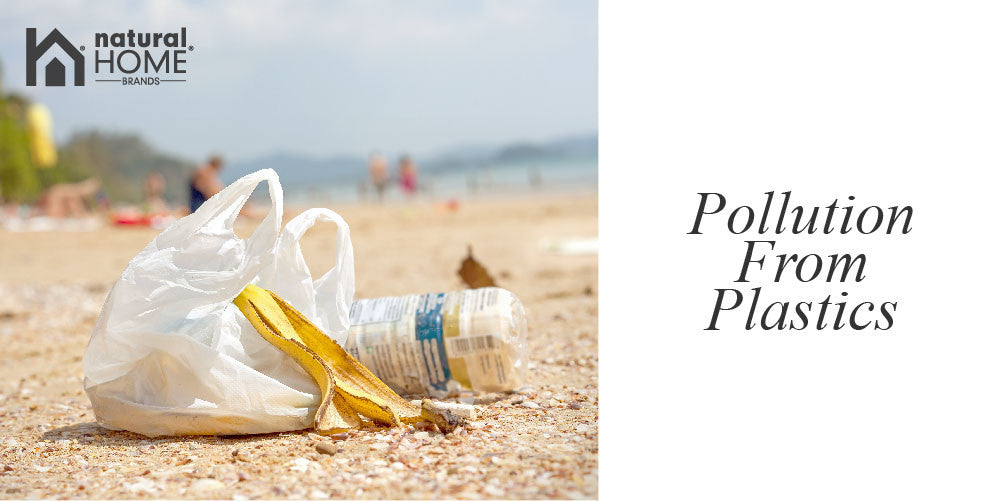Pollution From Plastics & How You Can Help

Pollution from Plastics
Let’s get real about plastic – there are millions of tons of debris floating around in our precious ocean waters – the majority of it, is plastic. Plastic does not disintegrate in the ocean, it gets broken up into smaller pieces, even to the point of creating a new type of sediment on our ocean floor, sediments of plastics! Katy Perry was even inspired by some plastic trash; feeling like a “plastic bag drifting through the wind”.
Plastic pollution is a real thing, and is becoming more of an epidemic. Our landfills are becoming more filled with plastic, taking up to 450-1000 years to decompose! Americans toss out about 22 billion plastic bottles each year.
With inactive landfills catching up to the number of active landfills, we need to start being more conscious of how our habits and buying trends are affecting our trash output and environmental factors. Check out this link that will show you how much trash is in your area, and how many landfills have opened and closed throughout the year: Land of waste
According to the EPA:
Recycling and composting prevented 87.2 million tons of material from being disposed in 2013, up from 15 million tons in 1980. Diverting these materials from landfills prevented the release of approximately 186 million metric tons of carbon dioxide into the air in 2013 — equivalent to taking over 39 million cars off the road for a year.
These carbon dioxide and methane molecules are also called greenhouse gases. These greenhouse gases are detrimental to our environment because they can capture outgoing infrared energy from our earth, and warm our planet, and even cause smog if uncontrolled.
Greenhouse effect example:
Bright sunlight will effectively warm your car on a cold, clear day by the greenhouse effect. The longer infrared wavelengths radiated by sun-warmed objects do not pass readily through the glass. The entrapment of this energy warms the interior of the vehicle. The trapping of the hot air so that it cannot rise and lose the energy by convection also plays a major role.
Some ways of reducing your plastic output:
STOP BUYING PLASTIC WATER BOTTLES! – Every year, around 22 billion plastic bottles are tossed in the trash – not even tossed into the recycling. Save money and the environment by getting yourself a reusable bottle to carry with you. Not a tap water fan? They have water bottles with built in filters, or get a water filtration system at home and fill up before you go.
-
Recycle – Seems easy enough, right? Well some people still don’t recycle or don’t know what doesn’t belong in the recycling bin so they just throw everything in there, defeating the purpose of a separate recycling bin. The number at the bottom of recyclables will actually give you a lot of information. Most clear bottles and beverage bottles will be labeled with a #1 PET, containers with a #2 HDPE like milk jugs, laundry detergent bottles, and #5 PP like plastic cutlery, and ketchup bottles are all widely accepted by curb side pickups.
More recycling basics here: Recycling Basics & Recycling Numbers On The Bottom Of Plastics
-
Use reusable bags - A number of grocery stores & dog parks offer a place to recycle plastic bags for other customers to use. Grab a reusable bag (or make one out of old t-shirts) and keep it in your car or purse so it's always handy. Use Reusable Veggie Bags to shop for produce or items at the farmers markets.
-
Skip the Plastic Wrap - Most plastic wrap can't be recycled because it's contaminated with food - this can cause costly contamination during the recycling process.
-
Cook More – No take out containers or to-go bags are needed when you cook!
-
Think before you buy – Check out the packaging of all foods before you buy. Individual packages of trail mixes, single serve yogurts, etc. all create a lot of waste. Opt in buying things in bulk and store in glassware or reusable snack bags for packing lunches.
-
Start buying sustainable kitchenware – Plastic utensils and melamine dinnerware aren’t the best things to eat or cook with, nor do they decompose at a reasonable rate once disposed of. Switch to bamboo cookware, Molded Bamboo ® , or stainless steel to cook and serve your favorite meals with. Have leftovers? Stock up on glassware food storage containers or save and reuse glass jars for things like homemade salad dressings, pasta leftover, canned items & much more.
Some Other Posts You Will Enjoy:
Eliminating Food Waste With The Million Home Challenge
20 Tips To Go Green In The Kitchen
Six Ways To Reduce Plastic Output
Shop Ecofriendly With Us Everyday At NaturalHomeBrands.com
- Gabriella De Luca